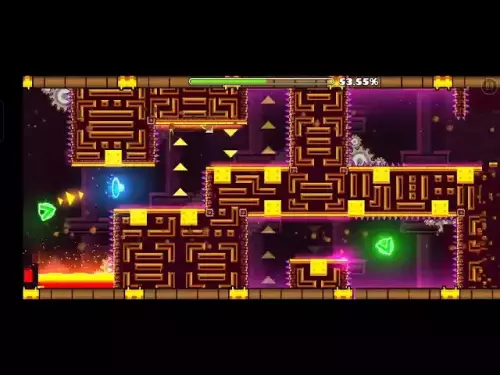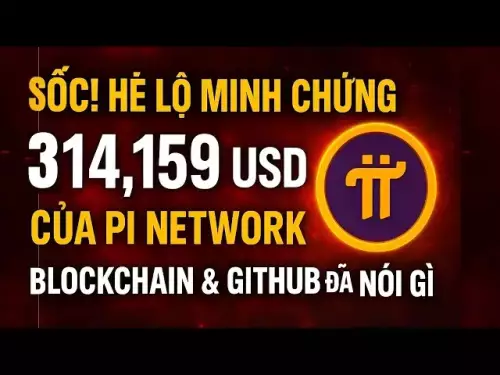-
 bitcoin
bitcoin $109547.008142 USD
0.04% -
 ethereum
ethereum $4011.838726 USD
-0.05% -
 tether
tether $1.000402 USD
-0.01% -
 xrp
xrp $2.798606 USD
0.88% -
 bnb
bnb $970.877944 USD
1.39% -
 solana
solana $202.237275 USD
-0.95% -
 usd-coin
usd-coin $0.999673 USD
0.00% -
 dogecoin
dogecoin $0.229294 USD
-1.15% -
 tron
tron $0.336370 USD
-0.45% -
 cardano
cardano $0.777260 USD
-1.66% -
 hyperliquid
hyperliquid $45.503019 USD
1.73% -
 ethena-usde
ethena-usde $1.000362 USD
0.01% -
 chainlink
chainlink $20.785303 USD
-1.10% -
 avalanche
avalanche $28.755822 USD
-0.11% -
 stellar
stellar $0.358303 USD
-0.48%
Can the rules of Bitcoin be changed, and who decides on upgrades?
Bitcoin's governance relies on decentralized consensus, where no single entity can force changes—upgrades require widespread node, miner, and community adoption to succeed.
Aug 02, 2025 at 06:36 am
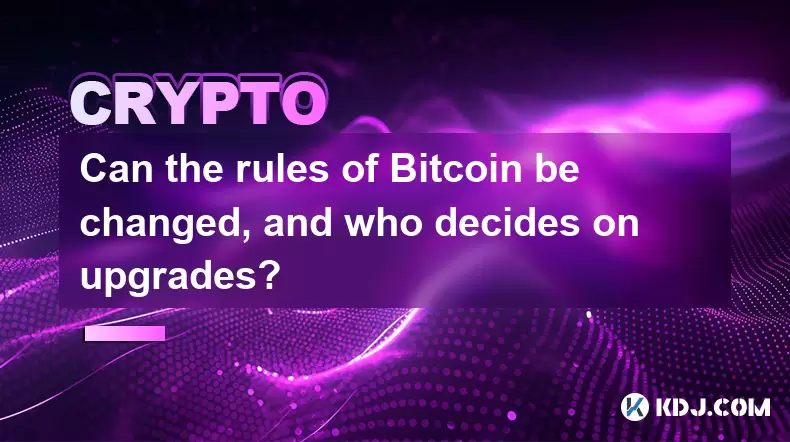
Understanding Bitcoin's Governance Model
Bitcoin operates without a central authority, which means no single entity has the power to unilaterally change its rules. Instead, changes to the Bitcoin protocol are governed through a decentralized consensus mechanism. Every participant in the network—miners, node operators, developers, and users—plays a role in determining whether a proposed upgrade is accepted. The core principle is that consensus must be reached across the network for any change to take effect. This consensus is not enforced by voting in the traditional sense, but rather by nodes validating transactions and blocks according to the agreed-upon rules. If a proposed rule change is not adopted by a majority of nodes, it will be rejected automatically by the network.
The Role of Bitcoin Improvement Proposals (BIPs)
Changes to Bitcoin typically begin as Bitcoin Improvement Proposals (BIPs). These are design documents submitted by developers or community members that describe new features, processes, or environments for Bitcoin. Each BIP goes through a formal process that includes drafting, discussion, and review. Important BIPs are categorized into three types: Standards Track (affecting protocol changes), Informational (providing general guidelines), and Process (describing development procedures). For a rule change to be considered, it must be submitted as a Standards Track BIP. Once published, it is open for public scrutiny, debate, and technical evaluation. The community—including core developers and long-term node operators—reviews the BIP for security, scalability, and alignment with Bitcoin’s philosophy.
Implementation and Node Adoption
After a BIP gains community support, the next step involves implementation into Bitcoin Core or compatible software. Developers working on Bitcoin Core or alternative implementations may integrate the proposed changes into their codebase. However, the actual enforcement of new rules depends on node operators upgrading their software. Each full node on the network independently verifies transactions and blocks based on the current consensus rules. If a node runs outdated software, it will reject blocks that follow new rules, potentially causing a chain split. Therefore, widespread node adoption is essential for a successful upgrade. Users who run full nodes must manually download and install updated software if they wish to follow the new rules. This decentralized upgrade process ensures that no change can be forced upon the network.
Miners and Consensus Enforcement
Miners contribute to rule enforcement by choosing which version of the software to run and which blocks to mine. While miners do not have the authority to create new rules, they signal support for upgrades through mechanisms like version bits or hashpower voting. For example, during a soft fork activation, miners indicate readiness by setting specific bits in the block header. Once a threshold (e.g., 95% of blocks over a 2016-block period) signals support, the new rules become active. However, miners cannot impose changes if nodes reject them. If miners adopt a rule change that nodes do not recognize, their blocks will be rejected, and their rewards will be invalid. Thus, miners align with the consensus established by node operators to remain profitable and maintain network integrity.
Soft Forks vs. Hard Forks: Types of Upgrades
Bitcoin upgrades are implemented through two main mechanisms: soft forks and hard forks. A soft fork is a backward-compatible upgrade that tightens existing rules. For example, Segregated Witness (SegWit) was introduced as a soft fork, allowing nodes that did not upgrade to still validate blocks, as long as they followed the stricter rules. In contrast, a hard fork introduces rules that are not backward-compatible, requiring all nodes to upgrade. If some nodes do not upgrade, they will follow a different chain, potentially leading to a permanent split—such as Bitcoin Cash in 2017. Soft forks are generally preferred because they reduce the risk of chain splits and allow for more gradual adoption. The decision to pursue a soft fork or hard fork depends on the nature of the change and the level of community consensus.
Community Consensus and Social Layer Influence
Beyond code and nodes, the social layer of Bitcoin plays a critical role in determining upgrades. Exchanges, wallet providers, businesses, and influential community members contribute to the discourse around proposed changes. Their public support or opposition can sway adoption. For instance, if major exchanges refuse to support a hard fork, the resulting chain may lack liquidity and fail to gain traction. Similarly, if developers or node operators perceive a change as compromising decentralization or security, they may resist it regardless of miner support. This social coordination acts as a check on technical changes, ensuring that upgrades align with the broader values of the Bitcoin ecosystem. The process is slow and often contentious, but it reinforces the principle that no change is valid unless it is widely accepted.
Frequently Asked Questions
Can a government or company force a change to Bitcoin’s rules?No. Governments or corporations cannot enforce changes to Bitcoin’s protocol because the network is decentralized. Even if a powerful entity controls significant hashpower or runs many nodes, they cannot override the consensus rules unless the majority of independent node operators adopt the change. Attempts to impose unilateral changes would result in those blocks being rejected by the network.
What happens if a majority of miners support a change but nodes do not?The change will not activate. Nodes have the final say in what constitutes a valid block. If miners produce blocks under new rules that nodes do not recognize, those blocks will be ignored. Miners would then waste resources and lose revenue, incentivizing them to follow the rules enforced by the node network.
How do users know which software version to install during an upgrade?Users should follow announcements from trusted sources such as the Bitcoin Core GitHub repository, official mailing lists, or reputable community forums. Before upgrading, it’s essential to verify the authenticity of the software using cryptographic signatures. Running unverified software can lead to loss of funds or exposure to malicious code.
Is there a formal voting system for Bitcoin upgrades?Bitcoin does not have a formal on-chain voting system. Decisions are made through decentralized consensus via node operation, software adoption, and miner signaling. While some off-chain surveys or miner signaling mechanisms exist, they are not binding. True acceptance is demonstrated by the number of nodes enforcing the new rules after an upgrade.
Disclaimer:info@kdj.com
The information provided is not trading advice. kdj.com does not assume any responsibility for any investments made based on the information provided in this article. Cryptocurrencies are highly volatile and it is highly recommended that you invest with caution after thorough research!
If you believe that the content used on this website infringes your copyright, please contact us immediately (info@kdj.com) and we will delete it promptly.
- BONK Investment: From $1K to $96K Gains and the Hunt for the Next Big Meme Coin
- 2025-09-28 16:25:12
- zkVerify's VFY Token Lands on KuCoin: A New Era for Zero-Knowledge Proofs?
- 2025-09-28 16:45:14
- Cathie Wood, Hyperliquid, and Solana: Decoding the Future of Crypto
- 2025-09-28 16:45:14
- Pi Wallet: Guardian of Meritocracy and GCV Stability in the Pi Network
- 2025-09-28 16:25:12
- Crypto Bulls Target QNT Token: Will the Rally Last?
- 2025-09-28 16:50:01
- Quant's Rally: Bulls Eye $103 Liquidity Amidst Market Optimism
- 2025-09-28 16:30:01
Related knowledge

Why is Bitcoin considered a revolutionary technology?
Aug 12,2025 at 08:29pm
Decentralization and the Elimination of Central AuthoritiesThe core innovation behind Bitcoin lies in its decentralized architecture, which fundamenta...
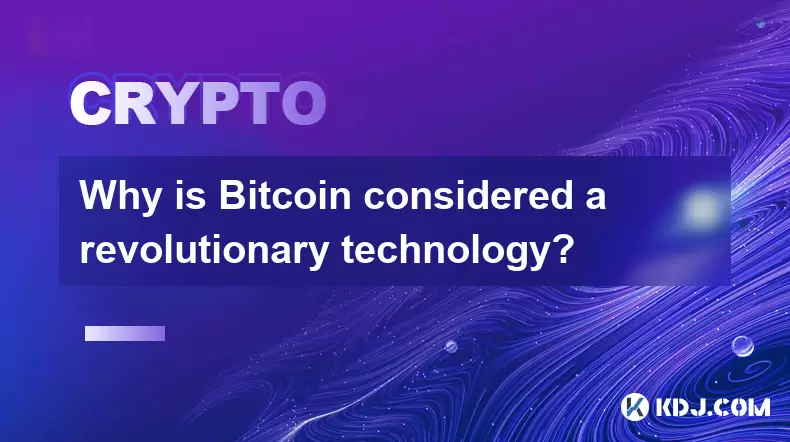
Why is Bitcoin considered a revolutionary technology?
Aug 10,2025 at 07:42pm
Decentralized Architecture and Trustless TransactionsBitcoin is considered revolutionary because it introduced a decentralized architecture that opera...

What are the key features of Bitcoin?
Aug 10,2025 at 02:50am
Decentralization and Peer-to-Peer NetworkOne of the most defining characteristics of Bitcoin is its decentralized nature. Unlike traditional financial...

Can the Bitcoin protocol be changed?
Aug 07,2025 at 01:16pm
Understanding the Bitcoin ProtocolThe Bitcoin protocol is the foundational set of rules that govern how the Bitcoin network operates. It defines every...
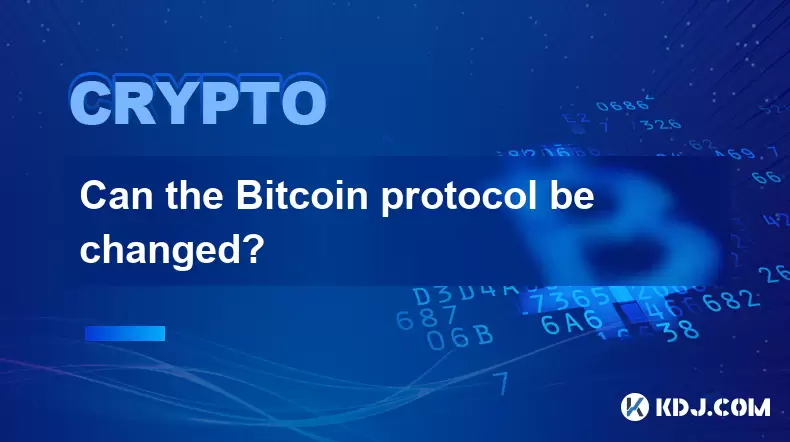
Can the Bitcoin protocol be changed?
Aug 11,2025 at 01:01am
Understanding the Bitcoin Protocol StructureThe Bitcoin protocol is the foundational set of rules that govern how the Bitcoin network operates. These ...
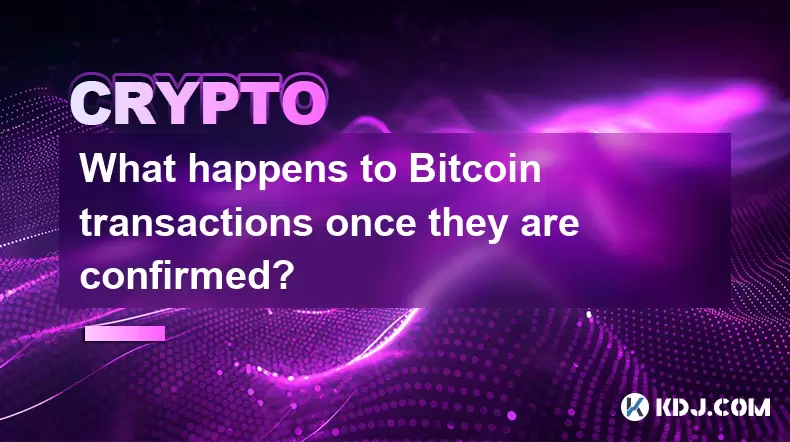
What happens to Bitcoin transactions once they are confirmed?
Aug 09,2025 at 05:22am
Understanding Bitcoin Transaction ConfirmationWhen a Bitcoin transaction is initiated, it is broadcast to the network and placed in a pool of unconfir...

Why is Bitcoin considered a revolutionary technology?
Aug 12,2025 at 08:29pm
Decentralization and the Elimination of Central AuthoritiesThe core innovation behind Bitcoin lies in its decentralized architecture, which fundamenta...

Why is Bitcoin considered a revolutionary technology?
Aug 10,2025 at 07:42pm
Decentralized Architecture and Trustless TransactionsBitcoin is considered revolutionary because it introduced a decentralized architecture that opera...

What are the key features of Bitcoin?
Aug 10,2025 at 02:50am
Decentralization and Peer-to-Peer NetworkOne of the most defining characteristics of Bitcoin is its decentralized nature. Unlike traditional financial...

Can the Bitcoin protocol be changed?
Aug 07,2025 at 01:16pm
Understanding the Bitcoin ProtocolThe Bitcoin protocol is the foundational set of rules that govern how the Bitcoin network operates. It defines every...

Can the Bitcoin protocol be changed?
Aug 11,2025 at 01:01am
Understanding the Bitcoin Protocol StructureThe Bitcoin protocol is the foundational set of rules that govern how the Bitcoin network operates. These ...

What happens to Bitcoin transactions once they are confirmed?
Aug 09,2025 at 05:22am
Understanding Bitcoin Transaction ConfirmationWhen a Bitcoin transaction is initiated, it is broadcast to the network and placed in a pool of unconfir...
See all articles






















